Introduction
The fashion industry has evolved significantly over the years, and each era has left its unique stylistic imprint. Join us as we stroll down memory lane, exploring the fascinating journey of fashion from bygone times to the present day.
The Victorian Era: 1837-1901
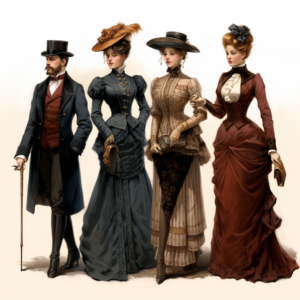
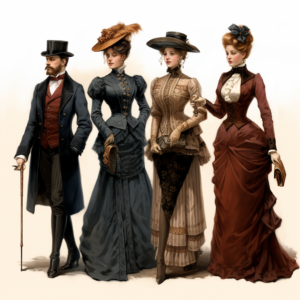
The Victorian era was a period featuring strict social rules, and this was reflected in the modest clothing styles. Women typically wore long dresses with high necklines, while men donned frock coats and top hats.
During this time, women wore clothing that emphasized propriety and respectability. Their dresses often had long sleeves, high necklines, and modest cuts. Under their voluminous skirts, women wore corsets, hoops, and multiple petticoats, all designed to create the illusion of a perfect hourglass figure.
Men’s fashion also followed societal expectations, with the well-dressed gentleman wearing a frock coat, waistcoat, and trousers. The frock coat, a long, tailored garment with skirts that fell to mid-calf, was a symbol of respectability and authority. Top hats, made of silk or beaver fur, were another popular accessory for men, indicating wealth and status.
Despite these strict societal rules, the Victorian era was also a time of great innovation and creativity in fashion. New technologies, such as the sewing machine, made it easier to produce and distribute clothing. The Industrial Revolution led to the emergence of new fabrics and dyes, making fashion more accessible to a wider range of people, and new styles and trends began to emerge.
One of the most significant trends of the Victorian era was the rise of the crinoline, a large hoop skirt that gave women a bell-shaped silhouette. The crinoline was both functional and decorative, allowing women to move more freely while also adding a touch of elegance and grandeur. The crinoline became a symbol of the opulence and extravagance of the Victorian era, and its influence continues to be seen in contemporary fashion today.
In summary, the Victorian era was defined by strict social rules and modest clothing styles. Women and men alike adhered to these standards, but the era was also marked by innovation and creativity in fashion. The legacy of the Victorian era continues to influence contemporary fashion, from the frock coat to the crinoline.
The Roaring Twenties: 1920-1929
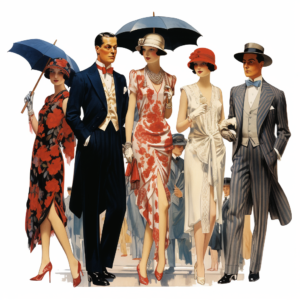
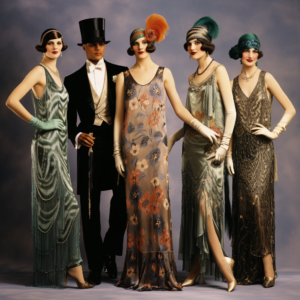
The 1920s was a transformative period in fashion, as women’s clothing became increasingly liberated and men’s fashion more relaxed. This era, often referred to as the “Roaring Twenties,” was marked by a rebellious spirit and a desire for self-expression, which was reflected in the clothing of the time.
Women’s fashion during the 1920s was defined by short dresses, bobbed hair, and the iconic “flapper” look. Short dresses that reached just below the knee allowed women to move more freely and showcased their legs, which was a significant departure from the long, restrictive skirts of the past. The “flapper” look, characterized by loose-fitting dresses, fringe, and beads, became popular during this time. Women also began cutting their hair into bobs, which were considered a daring and modern hairstyle. These changes in women’s fashion represented a newfound sense of freedom and empowerment, as women were no longer bound by the constraints of the past.
Similarly, men’s fashion also underwent significant changes during the 1920s. The modern suit, featuring a slim-cut jacket and trousers, became popular during this time. This style of suit, which was designed to be comfortable and easy to move in, represented a departure from the stiff and formal suits of the past. The introduction of the modern suit reflected the changing attitudes towards men’s fashion, as it became more focused on comfort and practicality. The 1920s was also a time of innovation in fashion, as new fabrics, dyes, and styles became available, and the Art Deco movement influenced the clothing of the time.
The Modern Times: 1960-Present

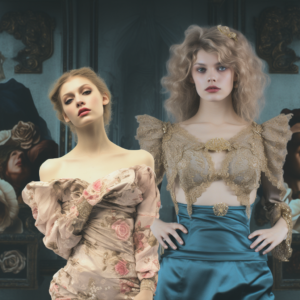
In today’s modern times, fashion has evolved into an open field, where designers draw inspiration from various eras and cultures, resulting in a diverse and accessible industry. Gone are the days when fashion was limited to a specific style or trend. Today, fashion is a global phenomenon, reflecting the influences of different cultures and periods.
The fashion industry has become more inclusive and representative, with designers embracing a wide range of sizes, shapes, and ethnicities. This has resulted in a more diverse range of clothing options, allowing individuals to express their unique style and personality. Additionally, the rise of fast fashion and online shopping has made fashion more accessible, with a wide range of affordable clothing options available to consumers.
The modern fashion industry is also characterized by a blending of different eras and styles, resulting in a unique and eclectic mix of clothing options. Designers often draw inspiration from past eras, such as the 1920s, 1950s, and 1970s, while also incorporating elements of contemporary design. This fusion of different styles has created a dynamic and ever-changing fashion landscape, where anything is possible.
Conclusion
In conclusion, the world of fashion is a dynamic and ever-changing landscape, constantly transforming to reflect the changes in society and culture. The history of fashion is a vast and rich tapestry, offering a fascinating glimpse into the trends, styles, and values of different eras. From the conservative clothing of the Victorian era to the liberated and rebellious styles of the 1920s, and the accessible and diverse fashion of today, there is no shortage of incredible stories and moments in fashion history.
As we’ve explored some of the most significant eras in fashion history, it’s clear that the industry is a reflection of the times and the values of the people who lived in them. From the societal rules of the Victorian era to the rebellious spirit of the 1920s, and the open and inclusive industry of today, fashion has always been a powerful form of self-expression and a mirror of society.
We invite you to share your thoughts, comments, and questions about fashion history in the comments section, and to subscribe to our newsletter for even more exciting walks through history’s diverse closets. We can’t wait to continue exploring the endless possibilities of fashion with you. The journey has just begun!


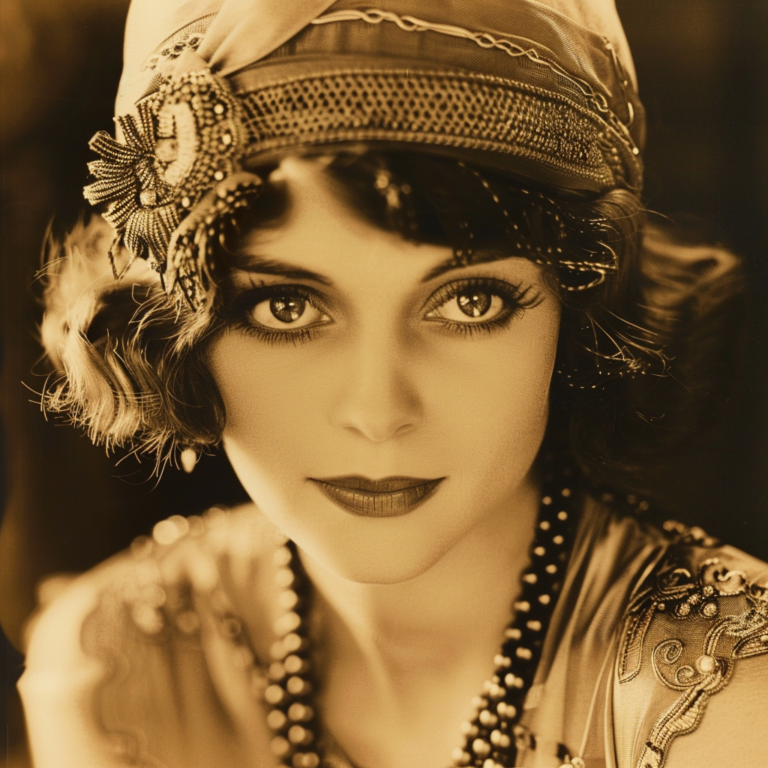
Very interesting details you have remarked, appreciate it for posting.